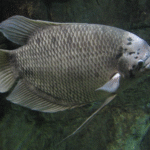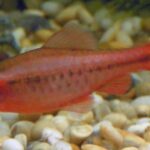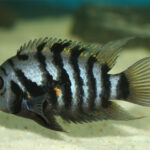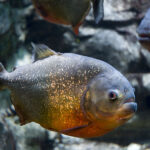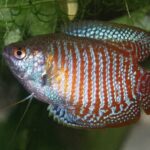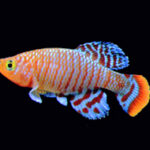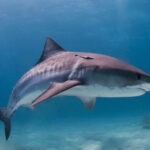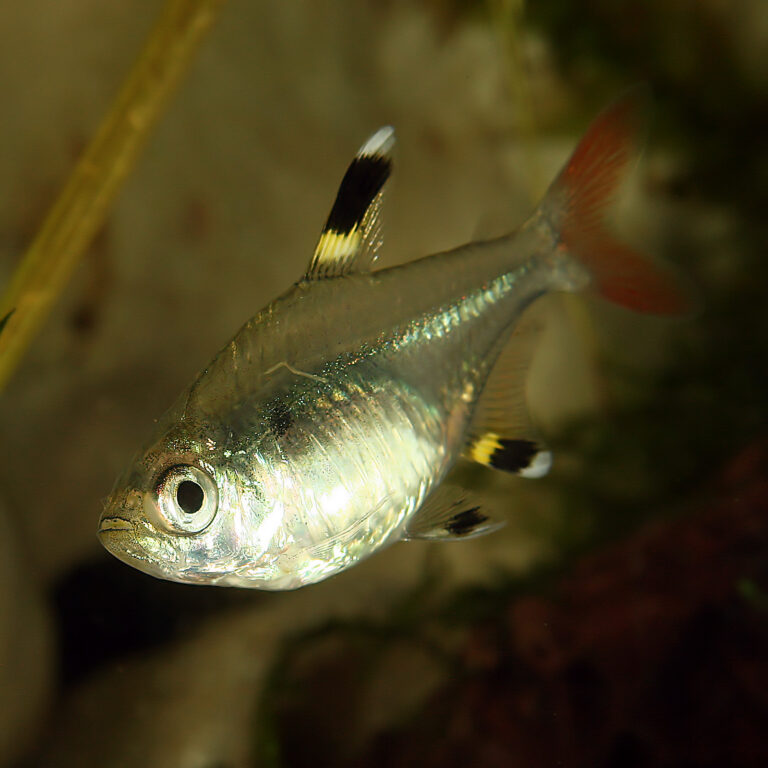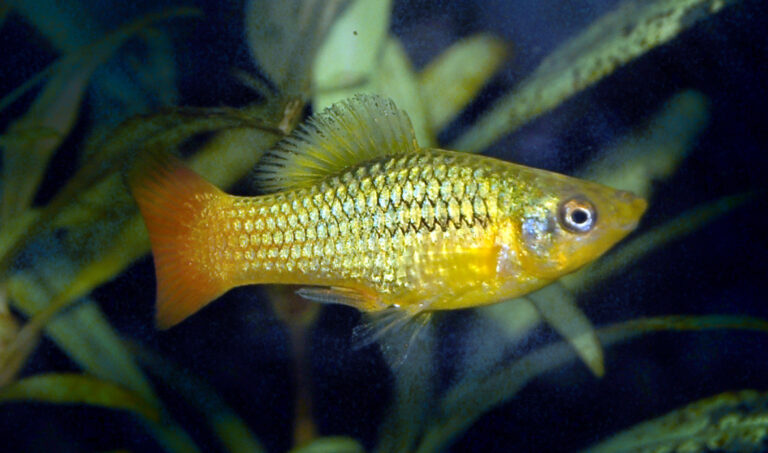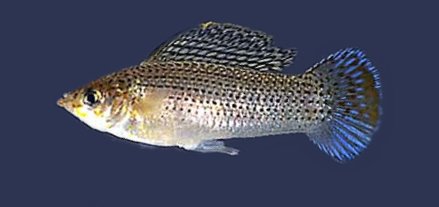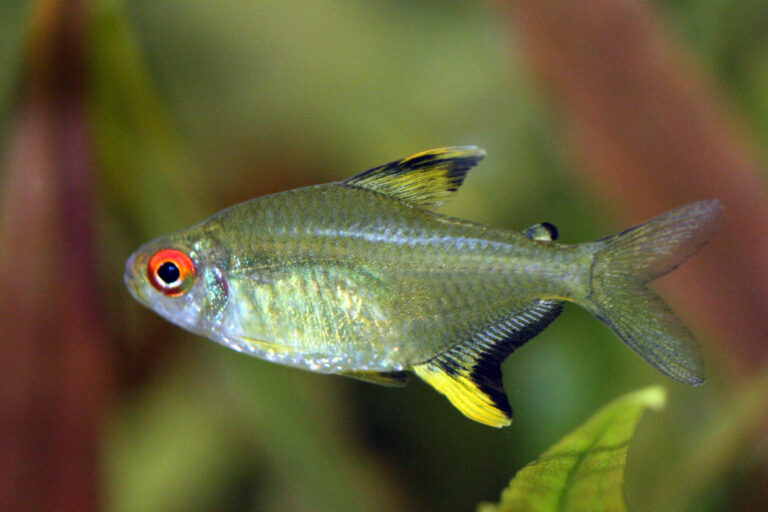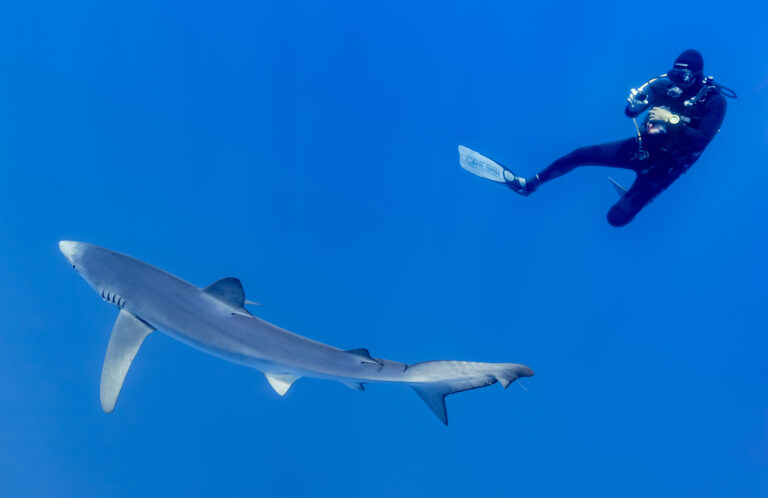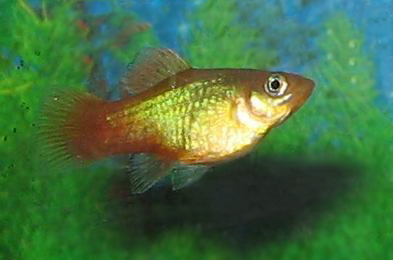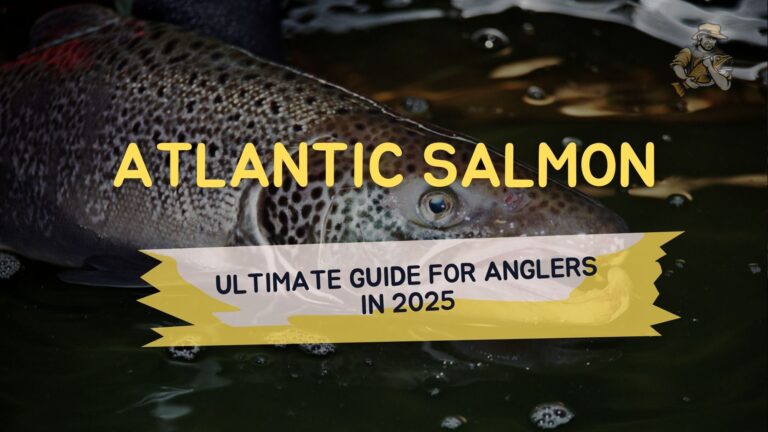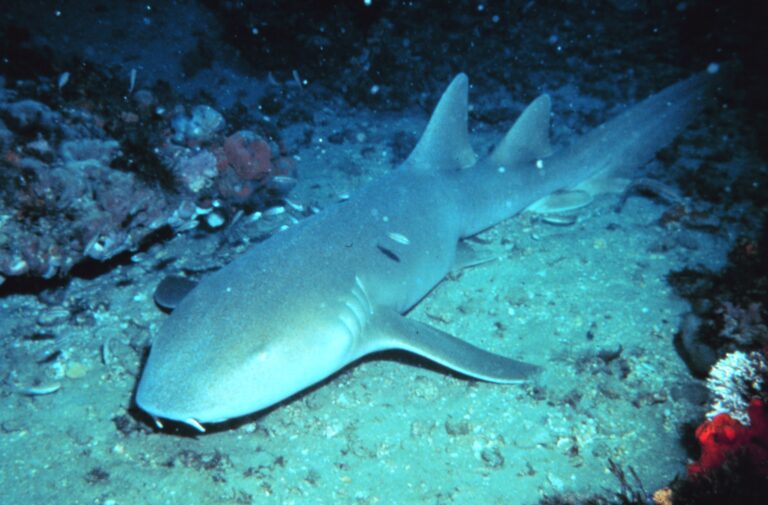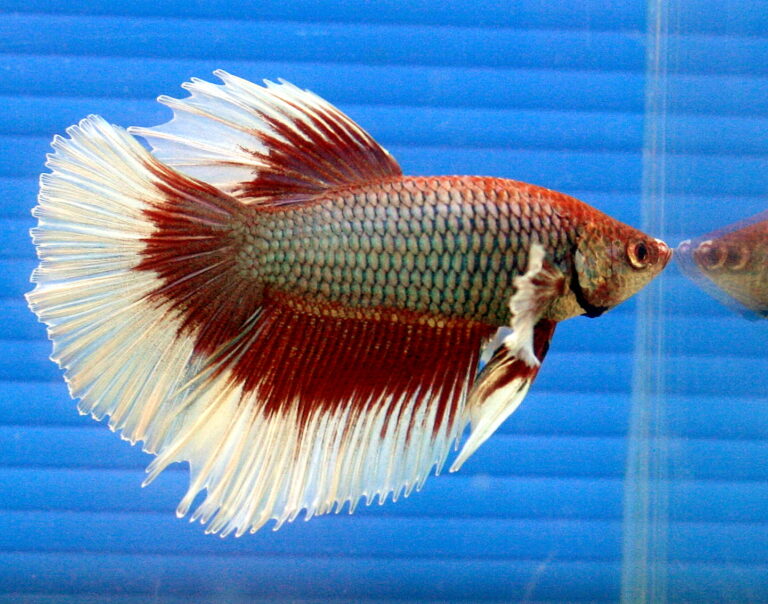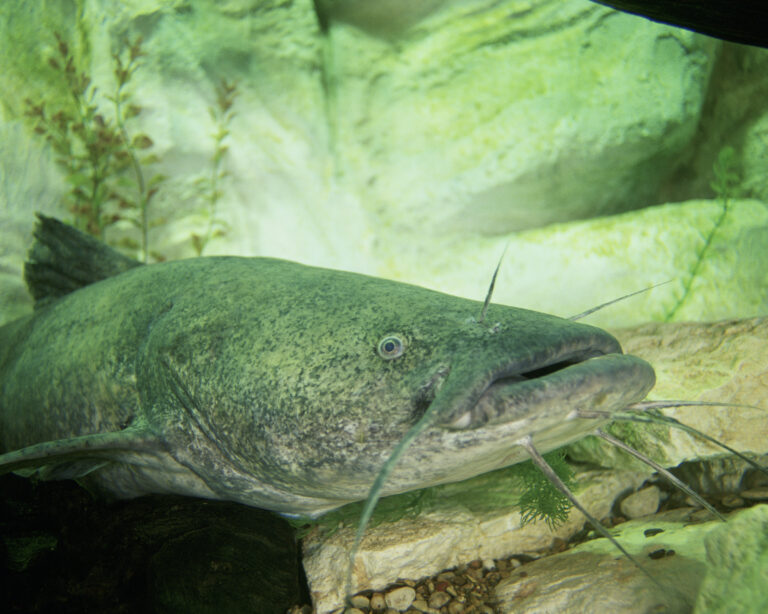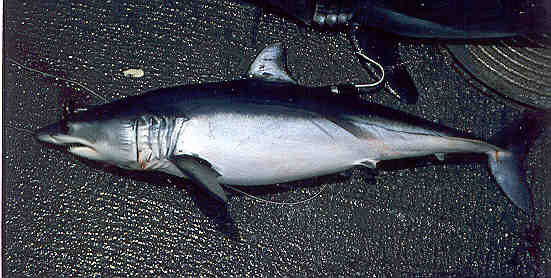Bolivian Ram
By Ryan Maron | Last Modified: June 9, 2025
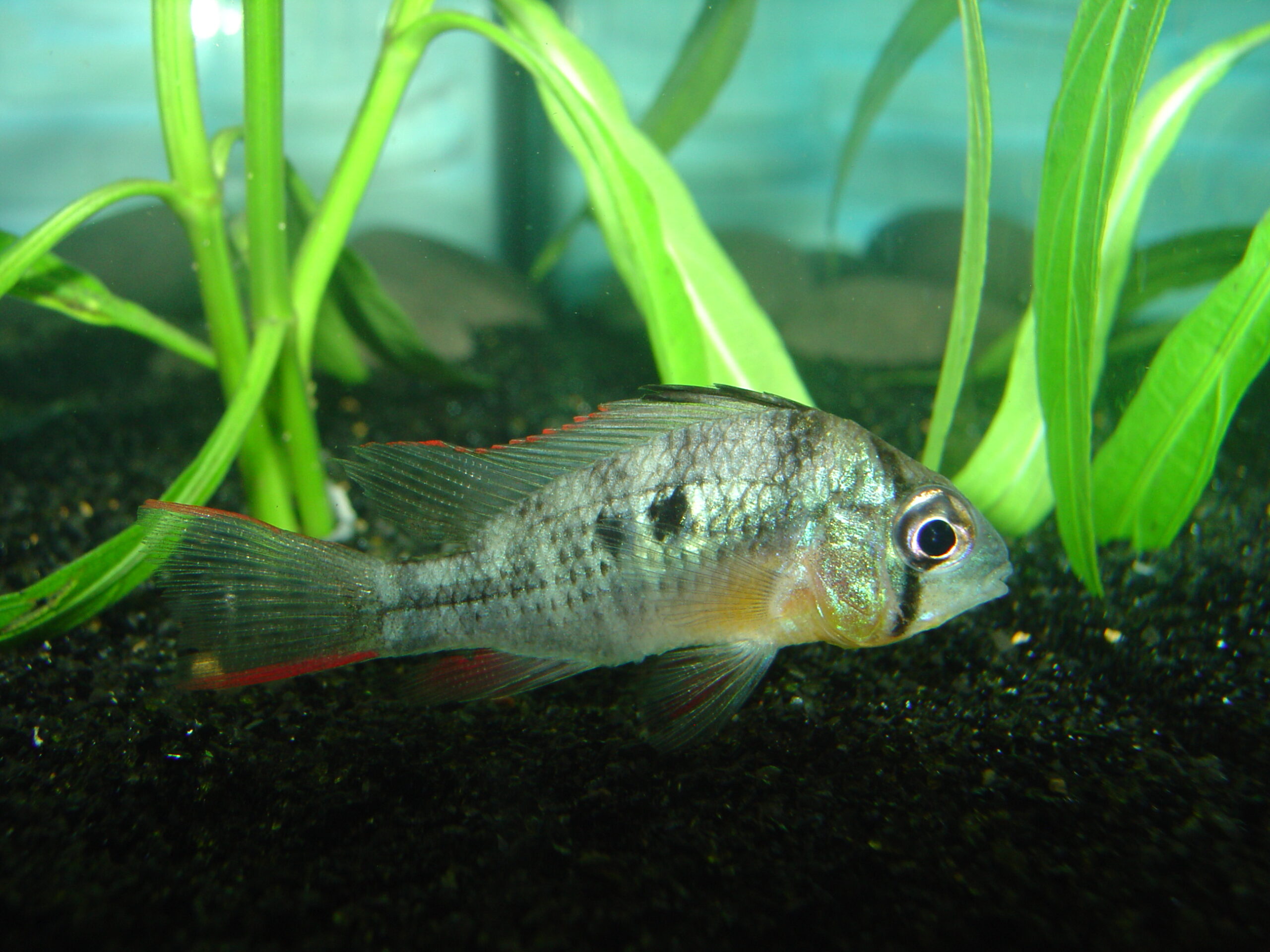
The Bolivian Ram (Mikrogeophagus altispinosus) stands as one of South America’s most captivating cichlid species, representing a prime example of adaptive evolution within the diverse aquatic ecosystems of the Amazon Basin. This remarkable freshwater fish has garnered significant attention from both marine biologists and aquarium enthusiasts due to its distinctive behavioral patterns, stunning coloration, and ecological importance within its native habitat.
Known scientifically as Mikrogeophagus altispinosus, the Bolivian Ram plays a crucial role as both predator and prey within the complex food webs of South American river systems. Unlike many cichlid species that exhibit aggressive territorial behaviors, the Bolivian Ram demonstrates a more peaceful disposition while maintaining sophisticated social structures that contribute to the stability of benthic communities. This species serves as an indicator organism for ecosystem health, with population fluctuations often reflecting broader environmental changes within tropical freshwater habitats.
The ecological significance of Mikrogeophagus altispinosus extends beyond its immediate habitat, as this species contributes to nutrient cycling through its feeding behaviors and serves as a food source for larger predatory fish, birds, and aquatic mammals. Understanding the biology and ecology of the Bolivian Ram provides valuable insights into the conservation needs of South American freshwater ecosystems and the intricate relationships that sustain biodiversity in these threatened environments.
| Feature | Details |
|---|---|
| Common Name | Bolivian Ram |
| Scientific Name | Mikrogeophagus altispinosus |
| Family | Cichlidae |
| Typical Size | 8-10 cm (3-4 inches), 15-25 grams |
| Habitat | Slow-moving rivers and tributaries |
| Diet | Omnivorous bottom-feeder |
| Distribution | Upper Amazon Basin, Bolivia and Brazil |
| Conservation Status | Least Concern |
Taxonomy & Classification
The Bolivian Ram belongs to the genus Mikrogeophagus within the extensive Cichlidae family, representing one of approximately 1,650 cichlid species worldwide. Originally described by Haseman in 1911, Mikrogeophagus altispinosus underwent several taxonomic revisions before its current classification was established through comprehensive morphological and genetic analyses conducted in the late 20th century.
Within the subfamily Geophaginae, the Bolivian Ram shares close evolutionary relationships with other South American dwarf cichlids, particularly the German Blue Ram (Mikrogeophagus ramirezi). Phylogenetic studies utilizing mitochondrial DNA sequencing have revealed that these two species diverged approximately 2-3 million years ago, coinciding with major geological changes in the Amazon Basin that created isolated populations and promoted speciation.
The genus Mikrogeophagus is distinguished from related genera by specific morphological characteristics, including the presence of elongated dorsal fin rays, particular patterns of lateral line scaling, and distinctive cranial bone arrangements. Molecular systematic studies have confirmed the monophyletic nature of this genus, supporting its separation from the larger Geophagus complex based on both genetic and phenotypic evidence.
Current taxonomic authorities, including FishBase and the Catalog of Fishes, recognize Mikrogeophagus altispinosus as a valid species with no accepted subspecies. However, ongoing research into population genetics across the species’ range suggests the possibility of cryptic diversity, with some isolated populations showing genetic differentiation that may warrant further taxonomic investigation.
Physical Description
The Bolivian Ram exhibits a laterally compressed, oval-shaped body profile typical of benthic cichlids, with adult specimens reaching maximum lengths of 8-10 centimeters and weights ranging from 15-25 grams. Sexual dimorphism becomes pronounced in mature individuals, with males developing more elongated dorsal and anal fin filaments and displaying more intense coloration during breeding periods.
The species’ coloration represents one of its most distinctive features, with a base color ranging from pale yellow to golden-brown, overlaid with an intricate pattern of iridescent scales that reflect blue, green, and purple hues under optimal lighting conditions. A prominent black spot, often referred to as the “eye spot,” appears on the posterior portion of the body near the dorsal fin base, serving both as a species identifier and potential predator deterrent through false-eye mimicry.
Fin morphology varies significantly between sexes, with males possessing more pointed and elongated dorsal fin rays that can extend well beyond the caudal peduncle when fully erected. The anal fin displays similar sexual dimorphism, with males showing more pronounced filamentous extensions. Both sexes possess well-developed pectoral fins adapted for precise maneuvering among aquatic vegetation and substrate materials.
The head profile of Mikrogeophagus altispinosus features a slightly concave forehead and a moderately protrusible mouth equipped with small, conical teeth adapted for processing various food items. The eyes are relatively large and positioned laterally, providing excellent peripheral vision essential for detecting both prey items and potential predators in their natural habitat. Scales along the lateral line system are clearly defined, with 28-30 scales typically counted along the longitudinal series.
Habitat & Distribution
Mikrogeophagus altispinosus inhabits the upper Amazon Basin, with confirmed populations distributed throughout eastern Bolivia and western Brazil, primarily within the Madeira River drainage system and its numerous tributaries. These fish demonstrate a strong preference for slow-moving waters with sandy or muddy substrates, where they can effectively employ their specialized feeding behaviors.
The species’ natural habitat is characterized by water temperatures ranging from 22-28°C, with pH levels typically between 6.0-7.5 and soft to moderately hard water conditions. These parameters reflect the influence of seasonal flooding cycles that dramatically alter water chemistry and habitat availability throughout the year. During high-water periods, Bolivian Rams disperse into flooded forest areas, while low-water seasons concentrate populations in permanent river channels and deeper pools.
Vegetation plays a crucial role in defining suitable habitat for Mikrogeophagus altispinosus, with dense stands of aquatic plants providing both shelter and foraging opportunities. Fallen logs, root systems, and leaf litter create complex three-dimensional structures that support diverse invertebrate communities upon which these fish depend for nutrition. The presence of overhanging riparian vegetation also contributes to the stability of water temperatures and provides terrestrial insect inputs during seasonal floods.
Hydrological patterns significantly influence the distribution and abundance of Bolivian Ram populations. These fish have adapted to the predictable flood pulse of Amazonian rivers, with breeding cycles closely synchronized to rising water levels that provide optimal conditions for juvenile survival. Areas with consistent water flow and minimal human disturbance typically support the highest population densities, while degraded habitats show marked declines in species abundance and reproductive success.
Diet & Feeding Behavior
The Bolivian Ram exhibits omnivorous feeding behavior with a strong emphasis on benthic foraging, utilizing specialized mouth morphology and behavioral adaptations to exploit diverse food resources within its habitat. Primary dietary components include small invertebrates such as chironomid larvae, oligochaete worms, microcrustaceans, and various insect larvae that inhabit sediment layers and plant surfaces.
Feeding strategies employed by Mikrogeophagus altispinosus involve systematic substrate sifting, where individuals take mouthfuls of sand or fine sediment and process the material through their gill rakers to extract organic matter and small prey items. This behavior, known as winnowing, allows the fish to access food resources unavailable to surface-feeding species while simultaneously contributing to sediment turnover and nutrient cycling within the ecosystem.
Plant material constitutes a significant portion of the diet, particularly during periods when invertebrate prey density decreases. Cichlid feeding patterns demonstrate remarkable flexibility, with Bolivian Rams consuming algae, decaying organic matter, and small seeds that supplement their protein intake from animal sources. Seasonal variations in food availability drive adaptive changes in feeding behavior, with fish showing increased foraging activity during low-water periods when prey becomes concentrated in smaller areas.
Foraging behavior typically occurs in small groups of 3-6 individuals, with established social hierarchies determining access to preferred feeding locations. Dominant individuals maintain priority access to areas with highest prey density, while subordinate fish utilize peripheral zones or forage during periods when dominant fish are less active. This social structure maximizes feeding efficiency while minimizing direct competition within local populations.
Behavior & Adaptations
Bolivian Rams demonstrate complex social behaviors that reflect their evolutionary adaptation to dynamic Amazonian environments. These fish exhibit a peaceful temperament compared to many cichlid relatives, rarely engaging in aggressive encounters except during territorial disputes associated with breeding activities. Social hierarchies within groups are established through subtle displays rather than physical confrontations, with dominant individuals showing enhanced coloration and fin positioning.
Territorial behavior becomes most pronounced during reproductive periods, when mated pairs establish and defend small areas of substrate suitable for spawning activities. Territory size typically ranges from 30-50 square centimeters, with boundaries marked through visual displays and limited chasing of intruders. Outside of breeding seasons, Mikrogeophagus altispinosus exhibits schooling tendencies, forming loose aggregations that provide enhanced predator detection and improved foraging efficiency.
Communication among Bolivian Rams involves a combination of visual signals, including color changes, fin positioning, and body posturing, along with low-frequency acoustic signals produced through specialized muscle contractions. These vocalizations play important roles in mate selection, territorial defense, and coordination of group movements, particularly during seasonal migrations associated with flood cycles.
Adaptive mechanisms for surviving in fluctuating environments include physiological tolerance to varying water chemistry conditions and behavioral flexibility in habitat utilization. Tropical freshwater fish adaptations often include enhanced sensory capabilities, and Bolivian Rams possess well-developed lateral line systems that detect subtle water movement changes, enabling early predator detection and improved prey location abilities. Their ability to adjust feeding behavior based on resource availability demonstrates remarkable phenotypic plasticity that contributes to their ecological success.
Reproduction & Life Cycle
The reproductive cycle of Mikrogeophagus altispinosus is closely synchronized with seasonal hydrological patterns, with peak spawning activity occurring during rising water levels that typically begin in November and extend through February in their native range. Sexual maturity is reached at approximately 6-8 months of age when individuals attain lengths of 5-6 centimeters, coinciding with the development of secondary sexual characteristics.
Courtship behavior involves elaborate displays where males establish territories and perform complex swimming patterns to attract females. Successful pair formation results in cooperative territory defense and nest preparation activities, with both partners participating in cleaning and preparing spawning substrates. Preferred spawning sites include flat rocks, large leaves, or cleared areas of fine sand where eggs can be deposited and effectively guarded.
Females typically deposit 100-200 adhesive eggs in organized rows, with males following immediately to provide fertilization. Egg development requires 48-72 hours under optimal temperature conditions of 26-28°C, during which time both parents engage in intensive parental care behaviors including egg fanning, debris removal, and territory defense. Hatching success rates in natural populations average 70-85%, with variations linked to environmental conditions and parental experience.
Post-hatching care continues for 7-10 days while larvae absorb their yolk sacs and develop swimming capabilities. Free-swimming fry remain under parental protection for an additional 2-3 weeks, during which time adults guide feeding activities and provide protection from predators. Juvenile growth rates average 2-3 millimeters per month during the first year, with survival to reproductive maturity estimated at 15-25% in wild populations due to predation pressure and environmental challenges.
Predators & Threats
Natural predators of Mikrogeophagus altispinosus include a diverse assemblage of fish, bird, and mammal species that exploit different life stages and habitat zones. Larger cichlids such as peacock bass (Cichla species) and various catfish represent primary piscine predators, particularly targeting juvenile and adult Bolivian Rams in open water areas. Wading birds including herons, egrets, and kingfishers pose significant threats during shallow water foraging periods.
Aquatic predators also include electric fish species, water snakes, and caimans that patrol deeper channel areas where adult Bolivian Rams seek refuge during daylight hours. Egg and larval stages face additional predation pressure from invertebrates, small fish species, and amphibians that can access spawning sites despite parental protection efforts. The complex predator assemblage has shaped the evolution of cryptic coloration, schooling behavior, and habitat selection patterns observed in wild populations.
Anthropogenic threats have emerged as increasingly significant factors affecting Bolivian Ram populations throughout their range. Deforestation and agricultural development have resulted in increased sedimentation, altered hydrology, and reduced riparian vegetation that supports the invertebrate communities upon which these fish depend. Mining activities, particularly gold extraction operations, introduce heavy metals and other pollutants that can affect reproductive success and juvenile survival rates.
Climate change impacts are becoming increasingly apparent through altered precipitation patterns that disrupt the predictable flood cycles essential for successful reproduction. Extended drought periods concentrate fish populations in smaller water bodies, increasing competition and predation pressure while reducing available spawning habitat. Amazon fisheries management faces challenges from overharvesting for the aquarium trade, which has led to population declines in some accessible areas where collection pressure exceeds natural recruitment rates.
Conservation Status
According to the International Union for Conservation of Nature (IUCN), Mikrogeophagus altispinosus is currently classified as Least Concern, reflecting its relatively widespread distribution and stable population trends throughout most of its range. However, this classification masks significant regional variations in population status, with some localized populations experiencing notable declines due to habitat degradation and collection pressures.
Population monitoring efforts conducted by Brazilian and Bolivian research institutions indicate that Bolivian Ram densities remain stable in protected areas and remote locations with minimal human disturbance. Conversely, populations near urban centers and areas subject to intensive agriculture show reduced abundance and altered age structure, suggesting ongoing demographic impacts from environmental stressors.
The species’ popularity in the international aquarium trade has created economic incentives for sustainable collection practices in some regions, while simultaneously increasing pressure on wild populations. Annual export quotas established by CITES authorities attempt to balance commercial interests with conservation needs, though enforcement remains challenging in remote collection areas with limited regulatory oversight.
Conservation strategies for Mikrogeophagus altispinosus focus primarily on habitat protection through the establishment and maintenance of protected areas that preserve critical spawning and nursery habitats. Community-based management programs that engage local fishing communities in sustainable collection practices have shown promise in areas where aquarium fish exports provide significant economic benefits. Research priorities include long-term population monitoring, habitat requirement studies, and development of captive breeding programs that could reduce pressure on wild populations.
Human Interaction
The relationship between humans and Bolivian Rams extends back centuries among indigenous Amazonian communities, where these fish have traditionally served as both food sources and subjects of cultural significance. Traditional fishing methods employed by local communities typically have minimal impact on population sustainability, as subsistence fishing pressure remains well within the reproductive capacity of most populations.
Modern commercial exploitation focuses primarily on the international aquarium trade, where Bolivian Rams command premium prices due to their attractive appearance and relatively peaceful temperament. Annual collection volumes are estimated at 50,000-75,000 individuals, with the majority exported to North American and European markets. This trade provides important economic opportunities for rural communities while creating incentives for habitat conservation in collection areas.
Aquaculture development has emerged as a potential solution to reduce pressure on wild populations while meeting growing market demand. Several commercial breeding facilities in South America and Asia have achieved success in reproducing Bolivian Rams under controlled conditions, though wild-caught specimens continue to dominate the market due to superior coloration and perceived genetic diversity.
Scientific research involving Mikrogeophagus altispinosus has contributed significantly to understanding cichlid evolution, behavior, and ecology. Laboratory studies utilizing this species have provided insights into parental care behavior, social hierarchy formation, and adaptive responses to environmental variation. Tropical fish research continues to reveal new aspects of their biology that inform both conservation strategies and aquaculture development efforts.
Interesting Facts
Bolivian Rams possess the remarkable ability to change their coloration rapidly in response to social situations, environmental conditions, and emotional states. Dominant individuals display intensified colors during territorial displays, while subordinate fish adopt muted tones that help them avoid confrontation and blend with their surroundings.
The species exhibits left-right behavioral preferences similar to handedness in humans, with individual fish showing consistent preferences for approaching objects or turning in specific directions. This lateralization appears to be genetically influenced and may provide advantages in foraging efficiency and predator avoidance strategies.
Unlike many cichlid species that abandon their offspring after initial care periods, some Bolivian Ram pairs demonstrate extended parental behavior, with adults continuing to recognize and protect their offspring for several weeks beyond typical independence periods. This behavior is most commonly observed in stable environments with low predation pressure.
Mikrogeophagus altispinosus can survive in water with dissolved oxygen levels as low as 2-3 mg/L, significantly below the tolerance thresholds of most tropical fish species. This adaptation allows them to occupy habitat niches unavailable to competitors and survive in stagnant backwaters during dry season periods.
The species’ scientific name “altispinosus” refers to the elevated dorsal fin rays that characterize mature males, but females can also develop similar fin extensions under certain environmental conditions, particularly in captive populations with optimal nutrition and reduced stress levels.
Frequently Asked Questions
How long do Bolivian Rams live in their natural habitat?
Wild Bolivian Rams typically live 4-6 years, with longevity influenced by environmental conditions, predation pressure, and seasonal variations in food availability. Individuals in protected habitats with stable conditions may reach 7-8 years, while those in disturbed environments often experience reduced lifespans due to increased stress and reduced reproductive success.
What is the difference between Bolivian Rams and German Blue Rams?
While both species belong to the genus Mikrogeophagus, Bolivian Rams are generally larger, more robust, and display greater environmental tolerance than German Blue Rams. Bolivian Rams also exhibit different coloration patterns, with yellow-gold base colors instead of the blue hues characteristic of their German Blue Ram relatives, and they demonstrate less aggressive territorial behavior.
Do Bolivian Rams require specific water conditions to thrive?
Bolivian Rams demonstrate remarkable adaptability to varying water conditions, tolerating pH ranges from 6.0-8.0 and temperatures between 20-30°C. However, they perform best in soft to moderately hard water with stable parameters that mimic their natural Amazonian habitat, including adequate dissolved oxygen levels and minimal pollution.
How do seasonal floods affect Bolivian Ram populations?
Seasonal flooding cycles are crucial for Bolivian Ram reproduction and population dynamics. Rising waters provide expanded habitat, increased food availability, and optimal spawning conditions, while flood recession concentrates populations and intensifies competition. These fish have evolved life history strategies that maximize reproductive success during predictable flood periods.
Conclusion
Mikrogeophagus altispinosus represents a remarkable example of evolutionary adaptation within South American freshwater ecosystems, demonstrating the complex relationships between environmental variation and species success. As both an ecologically important component of Amazonian food webs and a valued species in international trade, the Bolivian Ram serves as an indicator of ecosystem health and a focal point for conservation efforts that balance human needs with biodiversity preservation. Continued research and monitoring of this species will provide valuable insights into the broader challenges facing Neotropical freshwater fish communities in an era of rapid environmental change.
Share The Article:
More Fish Species:
-
Pristella Tetra
The Pristella Tetra (Pristella maxillaris) stands as one of South America’s most distinctive freshwater aquarium species, renowned for its…
-
Variable Platyfish
The Variable Platyfish (Xiphophorus variatus) stands as one of the most widely recognized and ecologically significant freshwater fish species…
-
Sailfin Molly
The Sailfin Molly stands as one of the most distinctive freshwater fish species in both wild ecosystems and aquarium…
-
Lemon Tetra
The Lemon Tetra (*Hyphessobrycon pulchripinnis*) stands as one of South America’s most vibrant freshwater fish species, distinguished by its…
-
Blue Shark
The Blue Shark (Prionace glauca) represents one of the ocean’s most accomplished travelers, traversing entire ocean basins in epic…
-
Sunset Platy
The Sunset Platy (Xiphophorus maculatus), commonly known as the Southern Platyfish, represents one of the most popular and recognizable…
Discover
-
North Jersey Fishing Guide: Best Lakes, Rivers & Seasons
If you’ve never experienced the fishing in North Jersey, you’re missing out on some genuinely underrated angling opportunities. From…
-
Atlantic Salmon: Ultimate Guide for Anglers in 2025
For as long as I can remember, I’ve been captivated by Atlantic salmon fishing. There’s something almost mystical about…
-
Nurse Shark
The Nurse Shark (Ginglymostoma cirratum) stands as one of the most recognizable and ecologically significant bottom-dwelling sharks in tropical…
-
Great Lakes Fishing Tactics That Nobody Talks About (But Should)
Ever notice how some anglers consistently haul in impressive catches from the Great Lakes while others struggle to get…
-
5 Deadly Trolling Tactics Big Fish Can’t Resist
The first time I watched a 40-pound king salmon completely ignore my perfect trolling setup, I wanted to throw…
-
How to Fish for Salmon in 2025: Expert Tips and Techniques
Few fishing experiences match the thrill of feeling a salmon take your line. These powerful fish have captivated anglers…
Discover
-
Yellowfin VS Bluefin Tuna: Which Should You Target? (Expert Guide)
Let’s be honest – the first time I saw a yellowfin and bluefin tuna side by side at the…
-
Half Moon Betta
The Half Moon Betta (Betta splendens) represents one of the most distinctive and sought-after varieties within the Siamese fighting…
-
Flathead Catfish
The Flathead Catfish stands as one of North America’s most formidable freshwater predators, commanding respect from both anglers and…
-
Caribbean Inshore Fishing: Bonefish and Permit Tactics
There’s something almost magical about stalking the shallow flats of the Caribbean. I still remember my first bonefish –…
-
Shortfin Mako Shark
The Shortfin Mako Shark stands as one of the ocean’s most remarkable predators, combining exceptional speed with sophisticated hunting…
-
Ryukin Goldfish
The Ryukin Goldfish (Carassius auratus) stands as one of the most distinctive and culturally significant ornamental fish varieties in…

